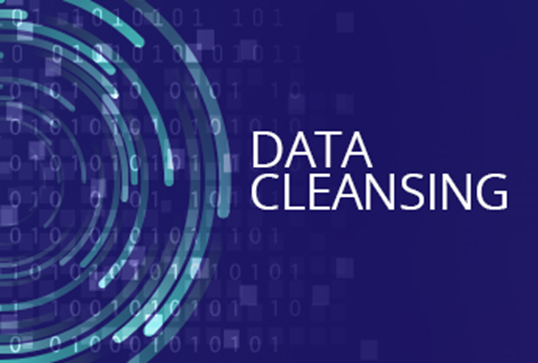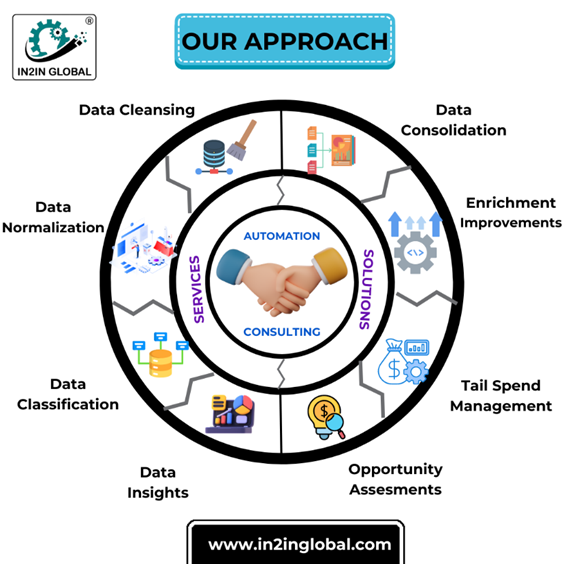Mastering the Art of Data Cleaning: 5 Essential Steps for Data Cleaning
Introduction:
In extremely-data driven world, Businesses are constantly accumulating
and storing massive quantities of statistics. However, the amazing and accuracy
of this data can vary substantially, principal to defective insights and
alternatives. This is wherein facts cleaning comes into play - the approach of
figuring out and rectifying errors, inconsistencies, and inaccuracies in
dataset. Data cleansing services talk with the approach of identifying,
correcting, and casting off any errors, inaccuracies, or inconsistencies in a
database or dataset. The goal of facts cleansing is to beautify the fine and
reliability of the facts, making it more accurate, usable, and dependable for
evaluation and choice-making functions.
5 Essential steps for Data
Cleaning:
Step 1: Understand the Data
Step 2: Handle Missing Values
Missing values are a common information exceptional problem which can
notably impact the reliability of analysis. Therefore, it's far important to
address missing values correctly in the course of information cleaning. There
are several techniques for coping with missing values, consisting of:
Deleting: If the missing values are confined and do not
substantially impact the analysis, it is probably appropriate to delete the
rows or columns containing lacking values.
Imputing: This entails filling within the lacking values
with an anticipated fee. Imputation can be completed the usage of diverse
techniques, inclusive of imply imputation, median imputation, or regression
imputation.
Creating a separate category: In some instances,
lacking values may additionally bring crucial information. In such situations,
it is probably suitable to create a separate category to symbolize missing
values.
The desire of approach for managing missing values relies upon on the
nature of the dataset and the evaluation objectives.
Step 3: Remove Duplicates
Step 4: Correct Inconsistent Values
Inconsistent values inside variables can introduce mistakes and bias in
evaluation. For instance, a variable representing age might have values ranging
from 0 to a hundred and fifty, that is exceedingly not going in maximum cases.
Therefore, it's miles crucial to discover and accurate inconsistent values at
some point of facts cleaning.
Step 5: Validate Data Against External Sources
To ensure
statistics accuracy and reliability, it's miles beneficial to validate the
dataset against outside assets. This entails comparing the records within the
dataset with depended on sources, which include reliable statistics or
independent databases. By validating the data, capability mistakes or
discrepancies may be identified and corrected.
Data validation
towards outside assets can be a time-ingesting method, however it's miles an
important step to make certain records first-class. Validating the information
in opposition to relied on assets provides credibility to the analysis and
increases self-belief in the derived insights.
Data cleansing services offer
numerous benefits to organizations. These include:
Enhanced operational performance:
Clean facts guarantees better operational performance by way of decreasing
mistakes, redundancies, and inconsistencies. It enables smoother methods and
workflows.
Cost financial savings: Data
cleansing services can assist organizations store charges through lowering
facts storage necessities, minimizing mailing and communique errors, and
averting capability felony and regulatory consequences due to faulty
statistics.
Better choice-making: Clean
and reliable facts provide a solid foundation for informed choice-making. It
allows companies to derive significant insights, discover trends, and make
strategic choices primarily based on correct records
Conclusion:
Mastering
the artwork of records cleansing is important to ensure records accuracy and
reliability. By following the 5 essential steps for Data Cleaning - expertise
the information, handling lacking values, disposing of duplicates, correcting
inconsistent values, and validating records towards outside resources -
businesses can make certain that their information is easy and ready for
evaluation. Effective 5 essential steps for Data cleaning is the foundation for
robust information evaluation and significant insights, permitting agencies to
make informed decisions based totally on dependable statistics.




Comments
Post a Comment